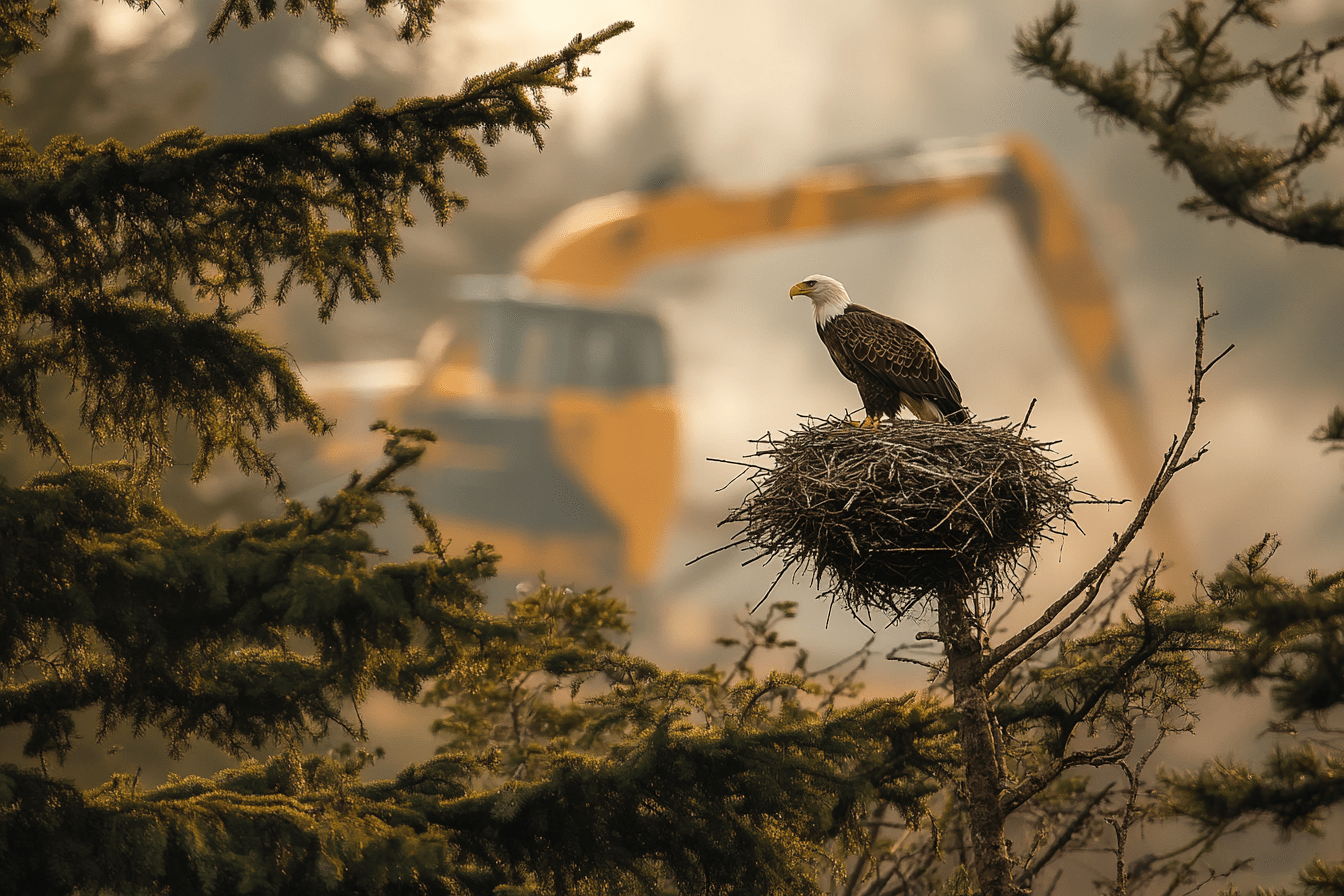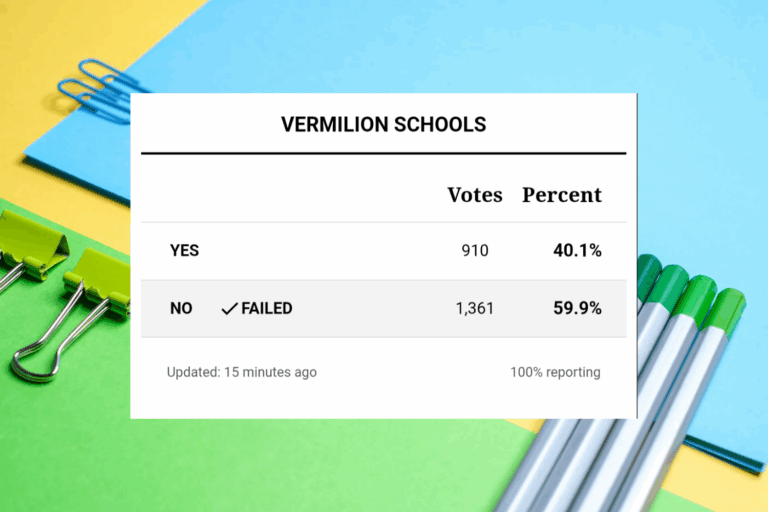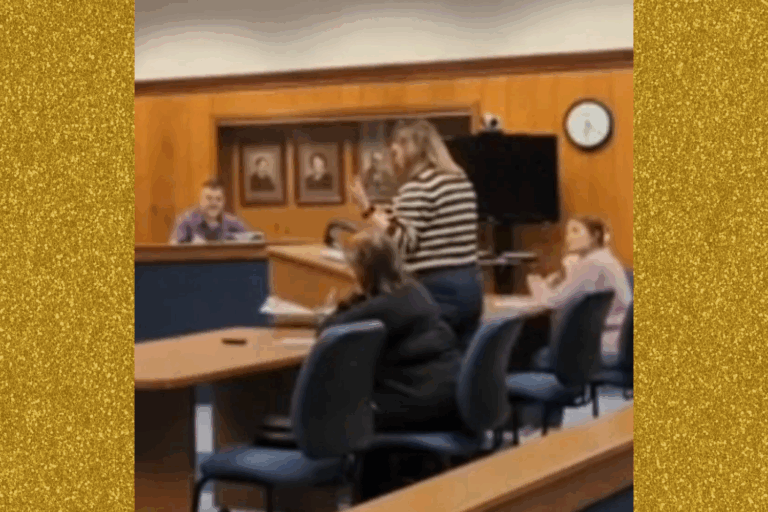
In 2024, the United States reaffirmed the bald eagle as its national bird, emphasizing its symbolic role in representing strength, freedom, and perseverance. This iconic species, once on the brink of extinction, has made a remarkable comeback due to successful conservation efforts and protective laws. However, in Vermilion, Ohio, one eagle’s habitat has become the focal point of a growing debate about local development and the balance between progress and wildlife protection.
A Symbol Under Threat
A proposed development in Vermilion centers on a 300-acre plot of land off Sunnyside Road, directly south of the railroad tracks and north of I-90. This area includes a bald eagle nest that has been a notable feature for years. Developer DBR, which owns the land, plans to construct 620 homes, raising concerns about potential impacts on the eagle’s habitat. While the development promises to bring growth to the region, it also poses challenges to the existing natural landscape.
The bald eagle, federally protected as a species, benefits from stringent legal safeguards. However, some Vermilion residents worry that these protections may not be fully upheld in the face of development. The developer has stated its intent to cooperate with the Ohio Department of Natural Resources (ODNR) and comply with legal requirements, yet skepticism remains about the potential environmental consequences.
Legal Challenges: A Contentious Process
The project has faced significant opposition from the community. Concerned Vermilion Citizens, A group of Vermilion area citizens opposed to this development, organized a referendum petition to block the development and let voters decide its future. However, DBR challenged the petition, citing procedural issues, and the Ohio Supreme Court ultimately ruled in the developer’s favor, preventing the referendum from advancing.
This legal outcome has fueled frustration among some residents. Local groups, such as Concerned Vermilion Citizens (CVC), have expressed concerns about perceived imbalances in the process, arguing that the community’s voice has been overshadowed by legal and financial factors. This has led to calls for stricter oversight of future development projects and more robust representation of community interests.
The Developer’s Position: Cooperation and Compliance
DBR has emphasized its commitment to mitigating environmental impacts and following all regulations. According to the developer, it has engaged with ODNR and plans to implement measures to protect the eagle’s habitat. DBR also highlights that it has adhered to the legal process, arguing that its actions align with the law and development standards.
Despite these assurances, some residents remain unconvinced. The developer’s successful legal challenges have contributed to a perception among critics that community concerns are not being prioritized. Others, however, acknowledge that DBR has met its obligations and question whether the opposition reflects broader resistance to growth in the area.
Environmental Impact: Balancing Development and Conservation
Beyond the legal and procedural debates, the potential environmental consequences of the project remain a significant concern. Community members have raised questions about the strain the development could place on local infrastructure, including roads and public services. Additionally, they worry about the broader implications for wildlife habitats and natural resources in the area.
Environmental advocates argue that preserving habitats like the eagle’s nest is crucial for maintaining ecological balance. They have called for more comprehensive studies to assess the potential impact of the development. Supporters of the project, meanwhile, point to the economic opportunities it could bring and the possibility of addressing housing needs in the region.
Moving Forward: What’s Next for the Bald Eagle?
With legal barriers largely resolved, attention has shifted to advocacy efforts. Some believe that national recognition of the bald eagle could draw additional scrutiny to the project, potentially prompting intervention from state or federal agencies. Activists hope that heightened awareness might lead to adjustments in the development plans to better account for environmental concerns.
The Role of Local Groups and Community Action
Although the referendum petition was unsuccessful, the CVC has continued its efforts to influence local development policies. A recently passed charter amendment requires that all new Planned Unit Developments (PUDs) approved by city council be subjected to a public vote, reflecting the community’s desire for greater oversight in the future.
The CVC has also indicated plans to pursue further legal action, though specific details remain undisclosed. The group maintains that holding developers accountable and ensuring community interests are protected are key priorities moving forward.
The Bigger Picture: Community and Development at a Crossroads
The debate in Vermilion reflects a broader challenge faced by many communities: balancing the benefits of development with the need to protect natural resources and preserve quality of life. For some, the proposed housing project represents economic growth and progress. For others, it raises difficult questions about the cost of that progress, particularly when it affects iconic species and fragile ecosystems.
As the community navigates these complex issues, the situation underscores the importance of transparency, collaboration, and accountability in decision-making. Vermilion’s residents and leaders face a critical opportunity to shape the town’s future while considering the long-term impacts on its environment and heritage.
In 2025, as Vermilion voters head to the polls, they will have the chance to reflect on how this issue was handled and what it means for the city’s priorities. How will these decisions shape the legacy of a community caught between growth and conservation?







this is the best article I have read and addresses all the issues about the eagle and the sunnyside toad project…nothing was for the people only the developer…this needs to be addressed with protecting the bald eagle and thinking of what it is doing to our community….